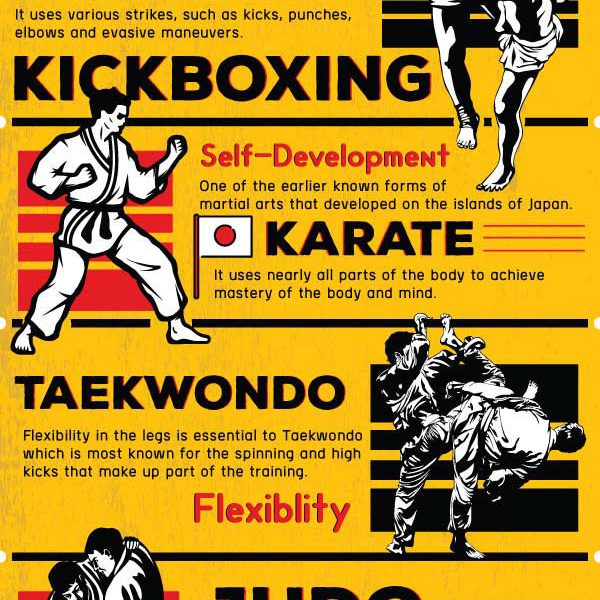Demystifying The Different Fighting Style Styles: From Karate To Taekwondo
Demystifying The Different Fighting Style Styles: From Karate To Taekwondo
Blog Article
Written By-Becker Russo
Are you tired of feeling bewildered by the large world of fighting styles? With a lot of designs to choose from, it can be easy to get shed in a sea of strikes, kicks, and strange names. But why shouldn't you bully not!
This conversation will debunk the different fighting styles designs, taking you on a journey from the powerful strikes of Karate to the vibrant kicks of Taekwondo. Prepare have a peek at this site to uncover the origins, strategies, and approaches behind these ancient art types.
So, tighten martial arts or self defense and prepare to start an informing exploration into the fascinating globe of martial arts.
Origins of Martial Arts Styles
The origins of fighting styles designs can be traced back to old worlds and their demand for protection and combat strategies. Throughout background, various societies established their very own unique approaches of fighting, each with its own set of techniques and viewpoints.
In China, as an example, martial arts designs such as Kung Fu and Tai Chi were developed as a means of protection and enhancing physical and psychological health.
In Japan, the samurai warriors created styles like Karate and Judo, focusing on technique, precision, and proficiency of the body.
In a similar way, in Korea, Taekwondo became a fighting style stressing high kicks, quick movements, and psychological determination.
These early worlds laid the structure for the diverse array of martial arts designs that exist today, each with its own rich background and social value.
Techniques and Training Techniques
To understand martial arts designs, professionals must find out various techniques and training techniques.
Techniques are the specific movements and activities used in combat, such as punches, kicks, tosses, and obstructs. Various martial arts designs have their own unique collection of techniques that professionals should master with extensive training.
Educating techniques vary depending on the design, however they typically include a combination of physical conditioning, drills, sparring, and types.
Physical fitness is vital to develop strength, flexibility, and endurance. Drills aid specialists refine their techniques and enhance their speed and accuracy.
Sparring permits specialists to practice their strategies in a regulated, sensible setting. Types, additionally referred to as kata, are ironclad series of activities that aid practitioners establish muscle memory and emphasis.
Philosophies and Principles
Discovering the approaches and principles of fighting styles styles can give you with a much deeper understanding of your selected technique. Each martial art has its very own one-of-a-kind viewpoint and set of directing principles that form the way it's practiced.
For example, Karate stresses discipline, regard, and self-control. It educates specialists to focus their body and minds, allowing them to defend themselves while keeping a feeling of internal tranquility.
On the other hand, Taekwondo puts a strong focus on rate, agility, and versatility. Its principles are rooted in the tenets of politeness, stability, perseverance, self-constraint, and unbeatable spirit.
Conclusion
Now that you've explored the beginnings, methods, and approaches of various martial arts styles, you have a deeper understanding of these old disciplines.
Visualize a young karate trainee, exercising with steadfast resolution and emphasis, breaking through boards with an effective strike.
see this and toughness called for to grasp a martial art, advising us that with technique and willpower, anything is feasible.
